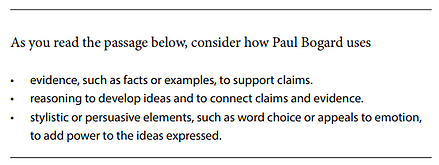Calculator Math  Class 4:  3 Hours Highlights:.
But because the passages are now more relevant to real life and will draw from recent examples, you now need to be in greater control of your personal biases. PSAT is the abbreviation for Preliminary SAT and is also referred to as the National Merit Scholarship Qualifying Test (NMSQT).
Your job isn't to interpret the passages, it's to find the answer within the passage . o   Keep a positive attitude!.
. o   Keep a positive attitude!.
Distance is defined as the entire distance traveled by an object..
It is important to follow the course schedule outlined in the class calendar, as well as the Due Dates for each assignment. SAT is taken by those high school students who wish to pursue their higher education in the US.
Each of the divisions has a maximum score of 800, giving a maximum overall score of 2400.. Where and when can I take the SAT?.
Your tutor’s recommendations come first, since those recommendations are assigned based on the focus of your 1:1 sessions..
On a single exam’s Reading section, you might see passages or graphs that concern the American Civil War, Shakespeare, and evolutionary biology. SAT-I, which is a Paper-based test (PBT), is of three-hour duration and it tests the verbal and mathematical reasoning skills of the students. * Test Taking Strategies
| Content |
Approximate % of Test |
|---|
|
Structure of matter
- Atomic Structure, including experimental evidence of atomic structure, quantum numbers and energy levels (orbitals), electron configurations, periodic trends
- Molecular Structure, including Lewis structures, three-dimensional molecular shapes, polarity
- Bonding, including ionic, covalent, and metallic bonds, relationships of bonding to properties and structures; intermolecular forces such as hydrogen bonding, dipole-dipole forces, dispersion (London) forces
|
25% |
|
States of matter
- Gases, including the kinetic molecular theory, gas law relationships, molar volumes, density, and stoichiometry
- Liquids and Solids, including intermolecular forces in liquids and solids, types of solids, phase changes, and phase diagrams
- Solutions, including molarity and percent by mass concentrations, solution preparation and stoichiometry, factors affecting solubility of solids, liquids, and gases, qualitative aspects of colligative properties
|
16% |
|
Reaction types
- Acids and Bases, including Brønsted-Lowry theory, strong and weak acids and bases, pH, titrations, indicators
- Oxidation-Reduction, including recognition of oxidation-reduction reactions, combustion, oxidation numbers, use of activity series
- Precipitation, including basic solubility rules
|
14% |
|
Stoichiometry
- Mole Concept, including molar mass, Avogadro’s number, empirical and molecular formulas
- Chemical Equations, including the balancing of equations, stoichiometric calculations, percent yield, and limiting reactants
|
14% |
|
Equilibrium and reaction rates
- Equilibrium Systems, including factors affecting position of equilibrium (LeChâtelier's principle) in gaseous and aqueous systems, equilibrium constants, and equilibrium expressions
- Rates of Reactions, including factors affecting reaction rates, potential energy diagrams, activation energies
|
5% |
|
Thermochemistry
- Including conservation of energy, calorimetry and specific heats, enthalpy (heat) changes associated with phase changes and chemical reactions, heating and cooling curves, entropy
|
6% |
|
Descriptive chemistry
- Including common elements, nomenclature of ions and compounds, periodic trends in chemical and physical properties of the elements, reactivity of elements and prediction of products of chemical reactions, examples of simple organic compounds and compounds of environmental concern
|
12% |
|
Laboratory
- Including knowledge of laboratory equipment, measurements, procedures, observations, safety, calculations, data analysis, interpretation of graphical data, drawing conclusions from observations and data
|
8% |
. To register for the SAT, please visit . French with Listening                      . There are five general subject areas: English, Math, History, Science, Languages (which also includes ELPT).
This is where the score of 200–800 points comes from, which is done through a statistical process called 'equating'.. All the topics in the syllabus are covered
. Comparison of the Major Features: Current SAT vs.
Tags : sat syllabus,sat test,syllabus,exam pattern,entrance,notification,cut off,2013,admission,sat exam,r-sat exam syllabus,education,program,sat college board,sat exam structure,sat pattern
 . o   Keep a positive attitude!.
. o   Keep a positive attitude!.
Excellent post. I just stumbled upon your blog and wanted to say that I have really enjoyed reading your blog posts. Any way I’ll be subscribing to your feed and I hope you post again soon.
ReplyDeleteBest IELTS Coaching Center in Chennai
IELTS Training Centers in Chennai
IELTS Coaching Classes in Chennai